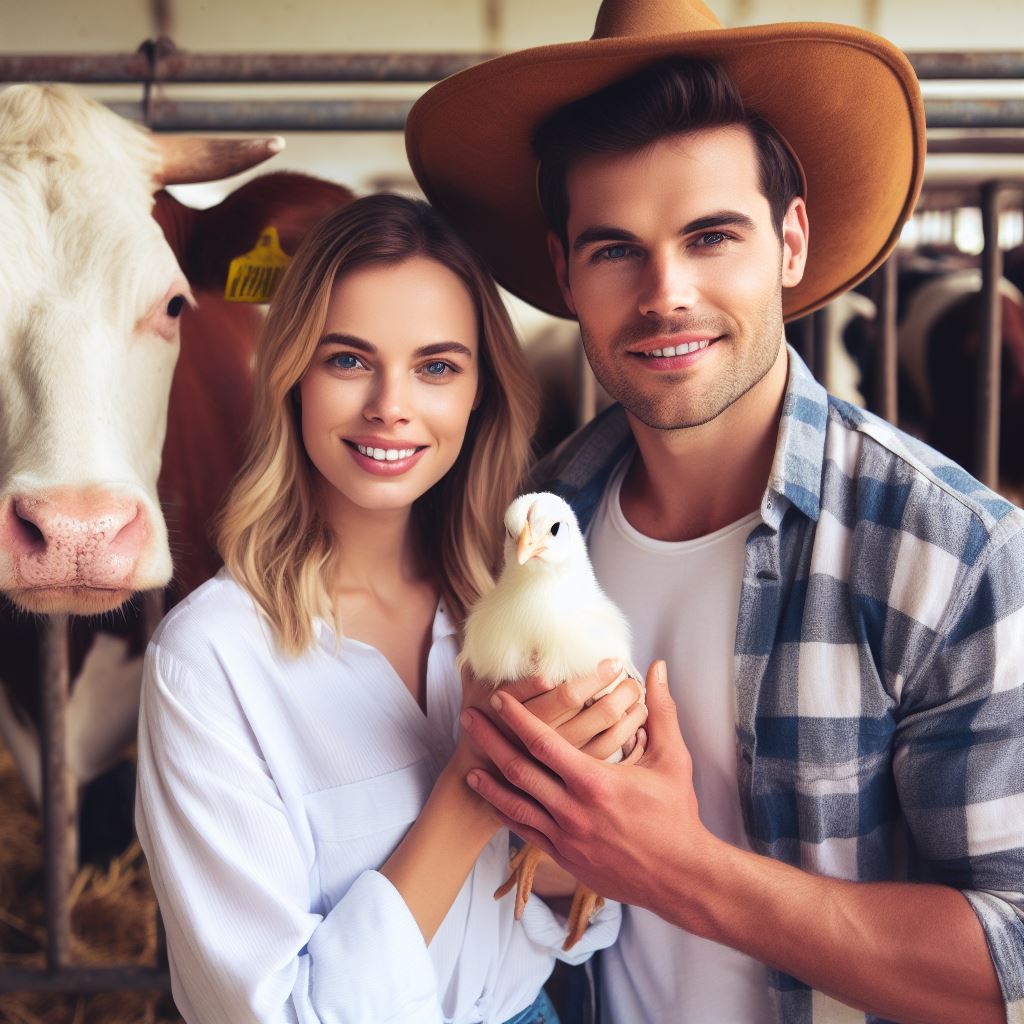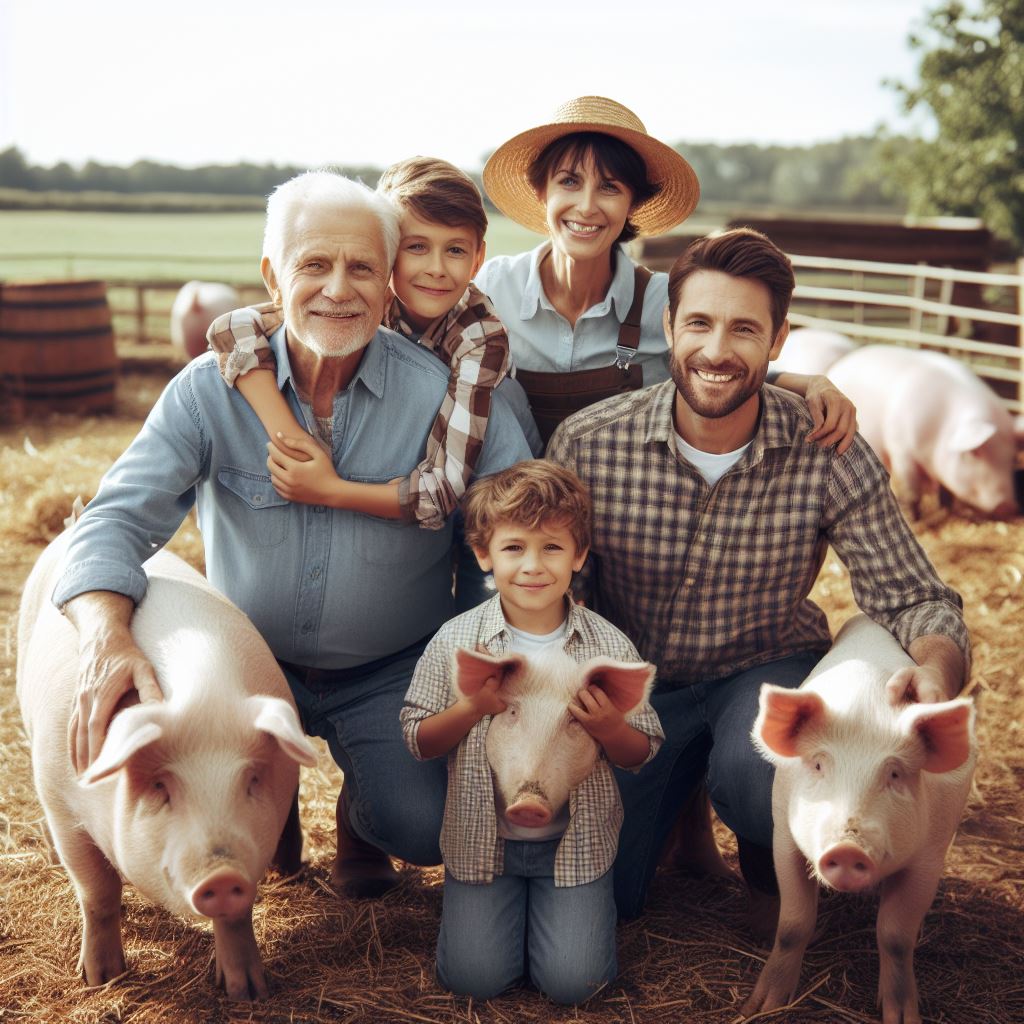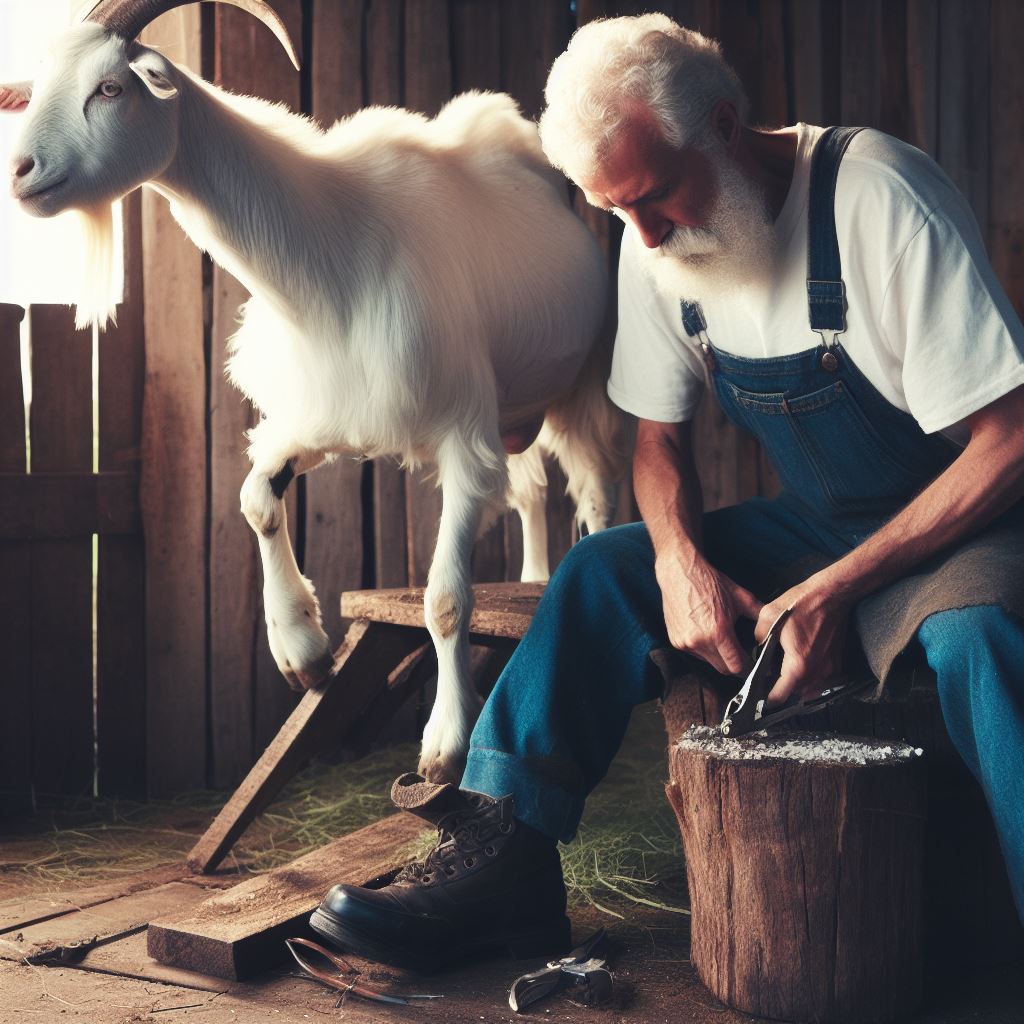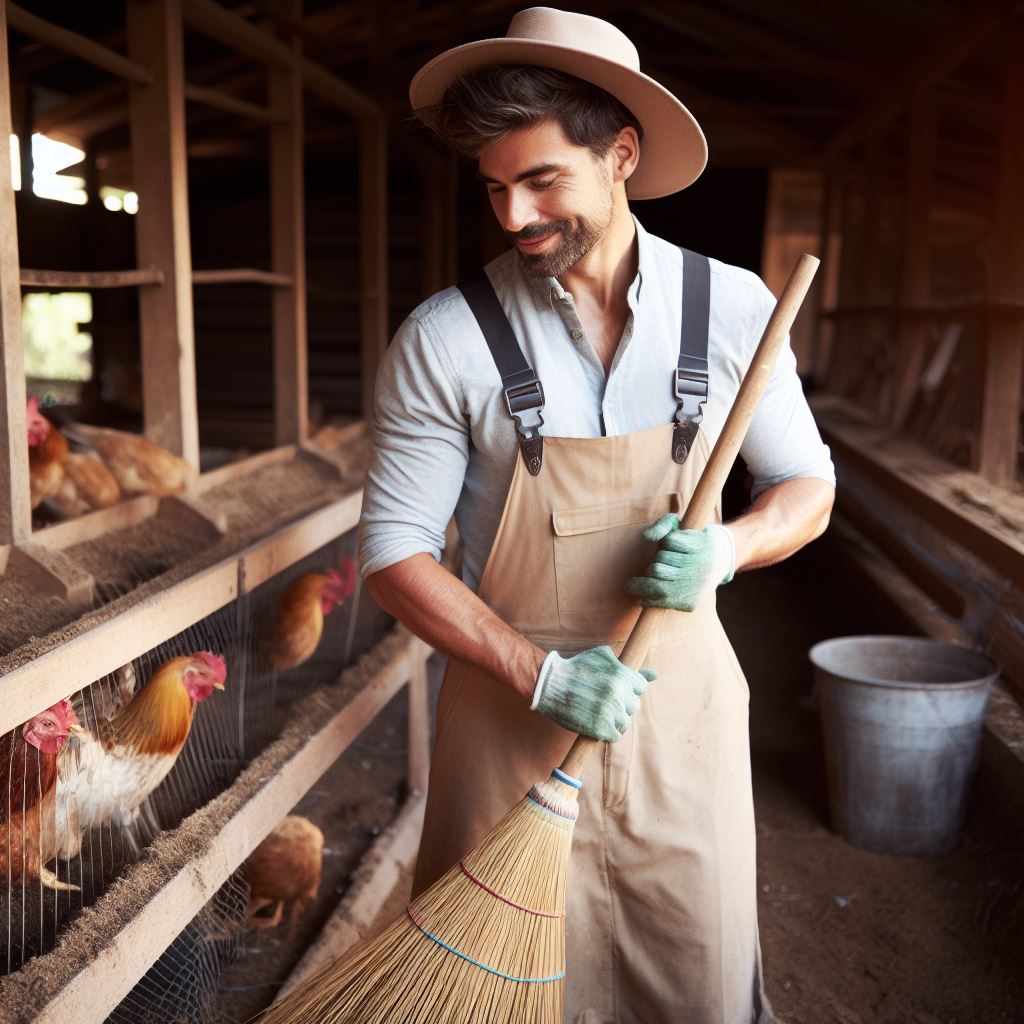Introduction
Let’s explore pasture rotation: Benefits and techniques.
Pasture rotation is a vital practice in sustainable farming, with numerous benefits and techniques that contribute to its importance.
By regularly moving livestock to different grazing areas, pasture rotation improves soil health, reduces parasites and diseases, and maximizes forage yield.
In the intricate dance between agriculture and environmental stewardship, pasture rotation emerges as a key choreographer, orchestrating a symphony of benefits for both the land and the livestock it supports.
As we delve into the realm of sustainable farming practices, the spotlight turns to “Pasture Rotation,” a method that transcends traditional agricultural norms, offering a harmonious blend of ecological conservation and enhanced agricultural productivity.
Pasture rotation, often hailed as a cornerstone of regenerative farming, operates on the principle of cyclically moving livestock through designated grazing areas.
This intentional and systematic approach not only rejuvenates the land but also fosters soil health, improves forage quality, and enhances the overall well-being of the livestock.
The symbiotic relationship between flora and fauna becomes a focal point, illustrating how strategic planning can transform pastures into resilient ecosystems.
In this blog post, we will explore the various advantages and techniques of pasture rotation, highlighting its significance for farmers and the environment.
This exploration navigates through the myriad benefits and techniques encapsulated within pasture rotation.
From mitigating soil erosion to optimizing nutrient cycling, pasture rotation unfolds as a dynamic strategy, fostering biodiversity while simultaneously elevating agricultural output.
Join us in understanding the intricacies of pasture rotation—a practice that not only nourishes the land but also cultivates a sustainable legacy for generations to come.
Read: Water Management in Livestock Farming
Benefits of Pasture Rotation
Rotating pastures has numerous benefits that positively impact both the land and the animals that graze on it.
Let’s explore some of the significant advantages:
Transform Your Agribusiness
Unlock your farm's potential with expert advice tailored to your needs. Get actionable steps that drive real results.
Get StartedImproved soil fertility
One of the most notable benefits of pasture rotation is the improved soil fertility it provides.
By rotating the grazing of animals across different pastures, the land can recover and regain its nutrient content.
As animals graze, they deposit manure, which contains essential nutrients that benefit the soil.
Rotational grazing allows the manure to be distributed more evenly, preventing nutrient depletion and promoting healthier soil.
Increased forage quality
Another advantage of pasture rotation is the increased forage quality.
By rotating pastures, grazing animals have access to fresh, nutritious forage.
This results in better forage growth and regrowth, as well as improved overall nutrition for the animals.
The rotation allows pastures to rest, giving the vegetation time to recover and grow back stronger.
Reduced parasite and disease risk
Pasture rotation plays a crucial role in reducing the risk of parasites and diseases in grazing animals.
Parasites and pathogens often have specific lifecycles and are dependent on the presence of susceptible hosts.
By rotating pastures, the lifecycles of pests are interrupted, as they do not have continuous access to the same host animals.
Additionally, rotational grazing can minimize the need for chemical treatments, as the natural grazing cycle helps control parasite populations.
In essence, pasture rotations offers several benefits that contribute to healthier and more sustainable land management.
It improves soil fertility, enhances forage quality, and reduces the risk of parasites and diseases.
By implementing pasture rotation techniques, farmers and ranchers can create a more balanced and productive ecosystem for their animals, while also preserving the long-term health of the land.
Read: Livestock Record Keeping: Tips for Efficiency
Uncover the Details: The Role of Technology in Poultry Farming
Techniques for Pasture Rotation
Pasture rotation is a dynamic strategy that maximizes land use and fosters sustainable farming practices.
Here’s a concise guide:
Divide Pastures into Sections
- Create designated grazing areas.
- Optimize space for rotational grazing.
Implement a Rest Period
- Allow pastures time to recover.
- Promote plant regrowth and root replenishment.
Monitor Grazing Intensity and Duration
- Control time and intensity of grazing.
- Avoid both overgrazing and underutilization.
Rotate Livestock Species
- Integrate various grazing animals.
- Enhance pasture utilization efficiency.
By subdividing pastures, farmers ensure livestock access to fresh forage while preserving plant health.
Designated grazing areas not only prevent overgrazing but also encourage even land use.
Providing a rest period is crucial; it facilitates plant recovery, allowing for vigorous regrowth and replenishment of root reserves.
Monitoring grazing intensity and duration is vital in preventing land degradation.
Controlling the timing and intensity of grazing activities avoids both overutilization and the detrimental effects of underutilization.
Showcase Your Farming Business
Publish your professional farming services profile on our blog for a one-time fee of $200 and reach a dedicated audience of farmers and agribusiness owners.
Publish Your ProfileA key aspect of effective pastures rotation involves the strategic rotation of livestock species.
Diversifying the types of grazing animals brings multiple benefits.
Different species utilize pastures uniquely, promoting a balanced and sustainable ecosystem.
In short, mastering pasture rotation techniques is pivotal for sustainable agriculture.
Through careful planning and active management, farmers can optimize land use, support biodiversity, and ensure the long-term health of both livestock and pastures.
Read: Eco-Friendly Livestock Farming Techniques

Uncover the Details: Dairy Cow Diet Essentials for Maximum Milk Yield
Considerations for Successful Pasture Rotation
Pasture rotation brings numerous benefits to livestock and pasture’s health.
However, successful rotation requires careful planning and flexibility.
It is crucial to adapt rotation plans based on weather and forage conditions.
The first consideration for successful pasture rotation is the need for proper water and fencing infrastructure.
Livestock must have access to clean water sources, and rotational grazers require well-maintained fences to control grazing patterns effectively.
Another critical aspect is monitoring and recordkeeping.
Regularly monitoring pastures and livestock conditions allows farmers to identify any issues early on and make necessary adjustments.
Recording grazing patterns and forage growth helps track the effectiveness of pasture rotation.
Planning and Flexibility
Successful pasture rotation relies on careful planning and adaptability.
Farmers should evaluate various factors, such as the number of livestock, available pasture, and desired rest periods.
It is essential to adjust rotation plans based on weather conditions.
During periods of heavy rainfall or drought, pastures may need longer rest periods or more frequent rotations.
Adapting to forage conditions is also crucial for maintaining optimal pasture health.
Water and Fencing Infrastructure
Having proper water sources and fencing infrastructure is vital for rotational grazing success.
Livestock must have easy access to clean water to maintain hydration and overall health.
Installing sufficient fencing allows farmers to control livestock movements and ensure proper rotation.
Well-maintained fences prevent overgrazing, limit soil compaction, and promote even forage distribution.
Monitoring and Recordkeeping
Regular monitoring of pastures and livestock conditions is key to identifying and addressing potential issues promptly.
Farmers should inspect pastures for signs of overgrazing, weed invasion, or nutrient deficiencies.
Keeping records of grazing patterns and forage growth provides valuable insights for pasture management.
Farmers can analyze grazing intensity, rest periods, and forage production, making informed decisions for future rotations.
In a nutshell, successful pasture rotations requires careful planning, adaptability, and proper infrastructure.
Farmers must consider factors like weather and forage conditions, ensuring water and fencing are well-maintained.
Regular monitoring and recordkeeping help track the effectiveness of rotations and ensure optimal pasture health.
Read: Managing Livestock Stress: Strategies & Tips
Conclusion
Pasture rotation offers numerous benefits including increased soil fertility, reduced weed growth, and improved animal health.
It is essential to implement proper techniques such as monitoring grazing periods and adjusting stocking densities to achieve successful rotation.
By practicing pasture rotation, farmers can contribute to sustainable agriculture, preserve their land, and ensure long-term profitability.
Therefore, it is crucial for readers to consider implementing pasture rotation as an essential practice in their farming operations.




